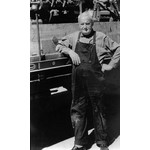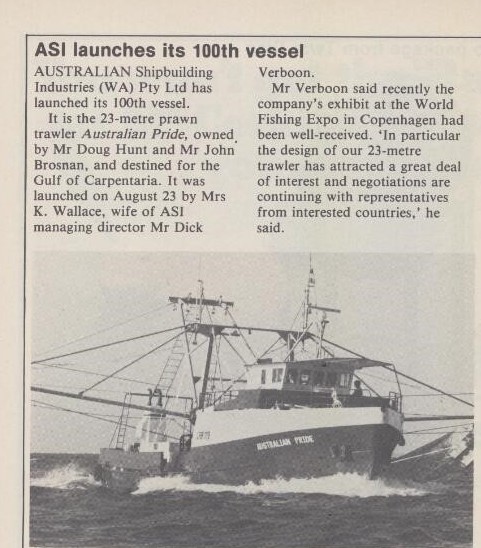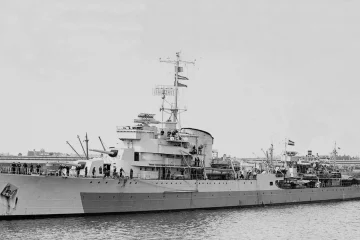
Australian Shipbuilding Industries Ltd (ASI) was founded by Dutch Australian brother Dirk and Nick Verboon. Historian Nonja Peters wrote in her PhD thesis that “Dirk Verboon was a Netherlands trained marine engineer and he found his way back into boat building more by chance than design.
‘When dad came to visit me in the early 1960s and became bored, he decided to build a boat. He grabbed my wife to go and buy him the needed materials because he couldn’t speak English and because my brother and I said we were too busy delivering bread. When he had finished that one, we (Dirk & brother Nick) sold it, and we started getting contracts for more boats. We ended up building quite a few in a yard in Osborne Park. We had several Dutchmen working with us. To start with, we all kept our day jobs and built boats at night. It became so lucrative that my brother and I started a company and shifted the business to a property in Naval Base with a large slipway. The other Dutchies also left their other jobs and worked for us full time.‘”
Dirk played a crucial role in establishing the foundation for aluminum-hulled ship construction in Henderson, Western Australia.

He was a visionary in the maritime industry, known for his innovative approach to shipbuilding. His work under the banner of Australian Shipbuilding Industries (ASI) marked the beginning of aluminum-hulled ship construction in Henderson. Verboon’s expertise and dedication laid the groundwork for what would eventually become a thriving shipbuilding hub.
Verboon’s focus on aluminum hulls brought several advantages, including lighter weight, increased speed, and improved fuel efficiency. These innovations were ahead of their time and set new standards in the industry. Verboon’s legacy is evident in the continued use of aluminum in modern shipbuilding, a testament to his forward-thinking approach.
Nonja Peters wrote in her thesis, “The Australian Ship Building Industries Ltd (ASI) that developed from these humble family beginnings eventually could build all types of sophisticated ‘small ships’ to any world classification (e.g. Lloyds, ABS and DET Norske Veritas) (ASI Prospectus 1985). The primary influence for the initial growth of this shipbuilding company was the expansion of the fishing fleet in both Western Australian coastal waters and the Gulf of Carpentaria. The brothers joined the ‘big league’ boat builders, eventually employing up to 1000 people. When Dirk and Nick Verboon sold their company to an American firm, most former Dutch employees also left. Many of them now run their own firms in niche markets, such as constructing specific sized crafts, boat repairs or boat cleaning.”
Dirk Verboon was also involved in the building of tallship STS Leeuwin II. Leeuwin II is named after the 17th century Dutch ship Leeuwin, which mapped part of Australia’s southwestern coastline. In August 2024, Leeuwin II was smashed by a freight ship in Fremantle port.
With thanks to Elly Spillekom for suggesting corrections to this article.
Sources & further reading:
- Nonja Peters, “Trading Place Greek, Italian, Dutch and Vietnamese enterprise in Western Australia”, PhD thesis, University of Western Australia, 1999.
- Dick Verboon, Door Douwen (2008)
See also: Dutchman John Rothwell founder of Austal


